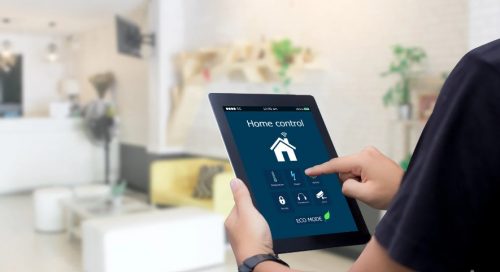How To Build a Smart Home?
Smart home technology has caused a stunning change in home management. Homeowners are ever more able to manage and maximise their living surroundings with unheard-of simplicity as new ideas develop. The development of smart gadgets has increased convenience and promoted energy conservation and better safety, from clever lighting systems that fit everyday routines to sophisticated security solutions with real-time monitoring.
The main characteristics, advantages, and drawbacks of smart home technology are investigated in this paper, as well as their possibility of providing a more sustainable and pleasant living environment.
The Evolution of Smart Home Technology

Over the last several years, technological developments have changed our interaction with our living environments. From the first days of simple remote controls to our current complex solutions, smart device integration has transformed house management. Modern innovations include smart thermostats, voice-activated assistants, and linked security systems that let homeowners handle many facets of their surroundings with unheard-of simplicity and efficiency.
Modern life is more pleasant and sustainable when this sequence increases convenience, energy efficiency, and better security. Regarding temperature control, businesses such as www.sub-cool-fm.co.uk lead the way with customised air conditioning and mechanical services designed especially for residential and business buildings’ complex requirements, guaranteeing ideal comfort and system efficiency.
Key Features of a Smart Home
A contemporary smart house is distinguished by many creative elements that improve efficiency and convenience. Smart lighting systems that may be configured to change automatically depending on the time of day or operated remotely are fundamental to this idea. Smart cameras and doorbells provide real-time monitoring and notifications, transforming home security.
Smart appliances also help simplify everyday chores, including ovens that may be warmed by a smartphone and refrigerators that manage inventory. These technologies, taken together, provide a flawless living experience that lets homeowners easily control their surroundings.
Benefits of Smart Home Technology
Adopting smart home technologies has several benefits that greatly improve everyday living. Higher energy efficiency is one of the most obvious advantages, as smart thermostats and lighting systems can maximise use depending on occupancy and preferences, reducing utility expenses.

Improved security elements provide homeowners peace of mind, let them keep an eye on their houses from far away, and get immediate alerts of any odd behaviour. Moreover, the ease of automating daily chores releases vital time so that people may concentrate on other important parts of their lives. These developments help to create a more pleasant, safe, and effective home.
Challenges and Considerations in Building a Smart Home
Despite its evident attraction, a smart house must fix several obstacles before adoption. Compatibility among devices can generate substantial issues that can cause frustration and inefficiency as not all products work well together. Due to the risk of hacking, data security and privacy are crucial. Installation and maintenance costs may hinder smart home retrofitters. A successful and secure smart home experience requires thorough planning and factor evaluation.
Smart home technology has improved our daily lives by offering security, efficiency, and convenience. As homeowners adopt these concepts, they save energy, improve safety, and automate activities. To experience a smart home, one must overcome device compatibility, data privacy, and installation costs.
By addressing these elements, individuals may build a harmonious and secure living place that meets their needs and suits their lifestyle, enabling a more connected and sustainable future.





































